
I thoroughly enjoyed reading this “recipe book” of Emma Darwin awhile ago, before work got crazy. It’s not just your average cookbook, it’s a documentation of family life in the Darwin household in the middle of the 19th century. It is filled with reproductions of handwritten recipes and beautiful botanical illustrations, as well as interesting anecdotes and little details about daily life, such as what time the family ate lunch and dinner and how they were “lax” because they didn’t require the children’s nurse to wear the “right cap”. Another bit of interesting trivia is that both Emma and Charles Darwin were grandchildren of Josiah Wedgewood. Which is more intriguing — the fact that the father of evolutionary theory had a connection to the famous Wedgewood pottery or the fact that he and his wife were first cousins — I cannot say!
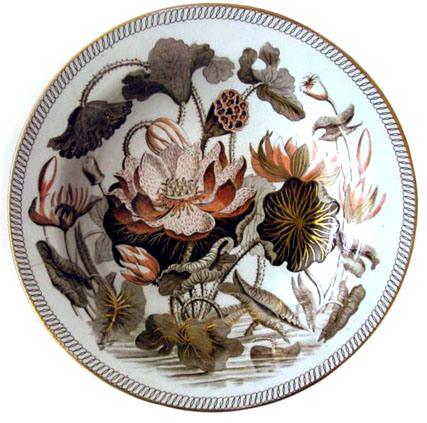
An example of the Wedgewood Waterlily pattern used by the Darwin’s
The recipes, which have been tested by the authors, Dusha Bateson and Weslie Janeway, give us modern day folk a taste of Victorian England via one of its most esteemed families. The historical notes are fascinating, and I found myself imagining what it must be like to live in Emma Darwin’s world. The Darwin household must have been teeming with activity, what with their ten children and a dozen servants living with them as well as numerous visits from family and friends. I imagine it was a full time job keeping track of the household accounts, the garden, and the livestock!
I hadn’t known that Charles Darwin had a rather delicate constitution and suffered from poor digestion. The recipe book is filled with rich Victorian age food that is comforting and soothing, such as puddings (apparently Emma’s original recipe book has more than sixty puddings!) and many other dishes with cream and butter. Preserving and pickling was quite common at the time, and Emma’s notebook has instructions for preserving eggs, curing beef, pickling, etc. There is a chapter in the recipe book on preserves that I am looking to make use of in the future (the Quince Jelly sounds wonderful).
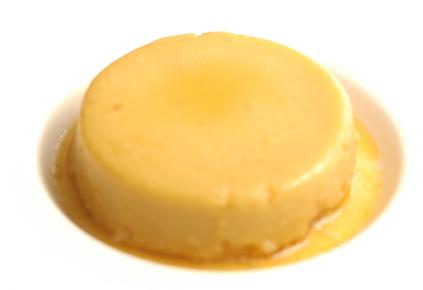
Since there is a whole chapter devoted to Charles Darwin’s beloved puddings, I knew I had to try one. I made the Burnt Cream, which is basically Creme Brulee. I don’t have a blow torch nor a salamander (an iron disc with a long handle that they used to heat the sugar), so I melted the sugar and poured on top. Unfortunately, I did not achieve a hardened layer. I also tried broiling it to crisp up the sugar with no luck. So, I served the puddings turned over on a plate. The caramelized sugar made a sweet sauce, making the dish more akin to Mexican Flan, which was delicious.
I also made Stewed Spinach because I knew Jamie would love it (and he did)! It is a simple side dish to throw together easily on a weeknight. It’s so comforting and good. And it always makes me happy to see my son eating green food.
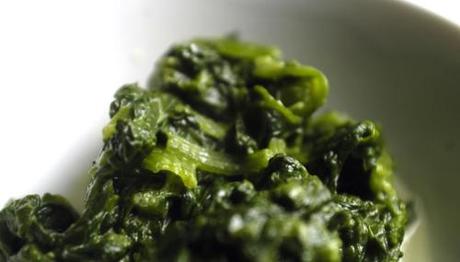
The third recipe I tried out was the Gingerbread. The authors adapted this recipe and used half of Emma’s original amounts (2 1/2 lbs. of flour!) I went a step further and cut that in half and made a loaf of Gingerbread instead of a large square pan of it. It was also delicious — perfect with tea– and gobbled up by children and adults for a nice afternoon snack.
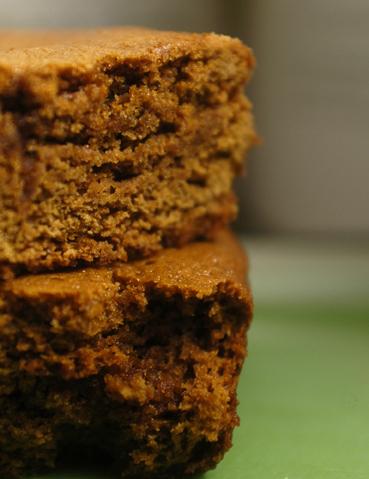
I hope you enjoy these recipes as much as we did. It also gave us an added sense of awareness knowing we were eating the same kind of food that was served over a hundred years ago and enjoyed by the Darwins in their cozy home in Down House on the North Downs of Kent, which added to the flavor.

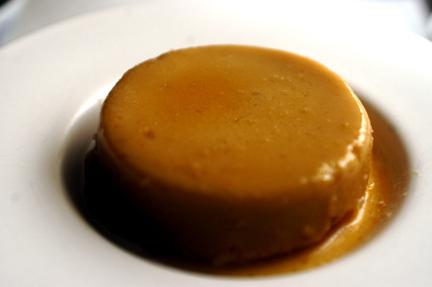
Recipes from “Mrs. Charles Darwin’s Recipe Book” by Dusha Bateson and Weslie Janeway, published by Glitterati Incorporated, 2008
Burnt Cream
1 tablespoon flour
1 cup (250 ml) heavy cream
2 eggs, separated
2 ounces (50g) superfine (caster) sugar, plus 1 teaspoon
1. Mix the flour in a medium saucepan with a little milk or water before adding cream; this will prevent lumps. (Note: I added 4 tablespoons of water and whisked it). Bring to a boil and cook gently for 10 minutes to ensure flour is thoroughly cooked.
2. Add the egg yolks and 1 teaspoon sugar. (You can do without the sugar at this stage if you like, as the caramelized top will provide plenty in the finished dish.)
3. Beat the egg whites only until they form a frothy liquid and add them to the pan. (Note, I added 1 teaspoon of vanilla extract.)
4. Taste and, if you are satisfied that no hint of floury taste remains, pour the mixture into an ovenproof dish and allow to cool. Chill overnight. (I used four small individual ramekins.)
Sprinkle an even layer of superfine sugar over custard. If you have a blowtorch, heat the sugar until it browns.
Otherwise, as the authors suggest, “Far simpler is to put the superfine (caster) sugar in a small heavy saucepan and heat it gently until it melts. Do not stir. When it starts to color and bubble, tip the pain in a circular motion so the sugar is well mixed and dissolves completely. Watch it carefully — it can burn very quickly. What you want is a deep auburn color with that wonderful caramel smell. Then, holding the custard dish in one hand, pour the molten sugar onto the top, tipping the dish so it covers evenly. The sugar will bubble up, but do not worry, it will soon subside. With his method, a beautiful thin layer is achieved. Do this a couple of hours before you want to eat. As soon as the sugar has cooled, chill until needed.”
Stewed Spinach
3/4 pound (350 g) fresh spinach (I used one bunch)
2 tablespoons butter
Approximately 1/2 cup (250 ml) heavy cream
Salt and pepper
Pinch grated nutmeg (optional)
1. Wash the spinach leaves well. Give the handfuls of leaves a good shake and pack them into a saucepan. No need for any extra water. Cover the pan and place over a medium heat.
2. After 1-2 minutes, remove the lid and stir the leaves with a wooden spoon, turning the top leaves to the bottom, so they all cook.
3. When the spinach is thoroughly wilted, let it bubble for another 1-2 minutes. Taste a small piece to make sure it is tender.
4. Pour the contents of the pan into a colander and plunge the sieve into a sink of cold water. This helps to keep the bright green color. Do not submerge completely, but make sure the spinach is in the water. Remove the colander from the water. Using a wooden spoon or, even better, your fist, press the spinach down, removing as much water as possible.
5. When you have extracted as much liquid as possible, put the spinach back in the saucepan over moderate heat. Add butter and with a wooden spoon mash or pound the spinach to break up the leaves.
6. Add just enough cream to give a thick puree. (You may not need to use the full amount.) Season with salt and pepper and a little grated nutmeg, if using. Serve at once.

Gingerbread
(I halved these amounts and baked in a loaf pan)
1 pound (450 g) flour (about 3 1/3 cups)
1/2 ounce (15 g) ground ginger (4 teaspoons)
1 teaspoon baking soda
4 ounces (110 g) butter
4 ounces (110 g) brown sugar (about 2/3 cup)
12 fluid ounces (335 ml) dark molasses
1 teaspoon lemon extract
2 eggs, lightly beaten
In Preparation: Preheat oven to 350 F
1. Line a 9-inch square baking pan with parchment paper.
2. Sift the flour into a large bowl. Add the ground ginger and the baking soda.
3. In a small saucepan, over low heat, melt the butter, brown sugar, and molasses together. Add lemon extract.
4. Make a well in the flour and add the mixture from the saucepan. Mix together thoroughly.
5. Add the beaten eggs and mix well.
6. Pour into prepared pan and bake for about 50 minutes. Test with a toothpick. If it comes out clean, the cake is done. If not, bake for a few minutes more.

